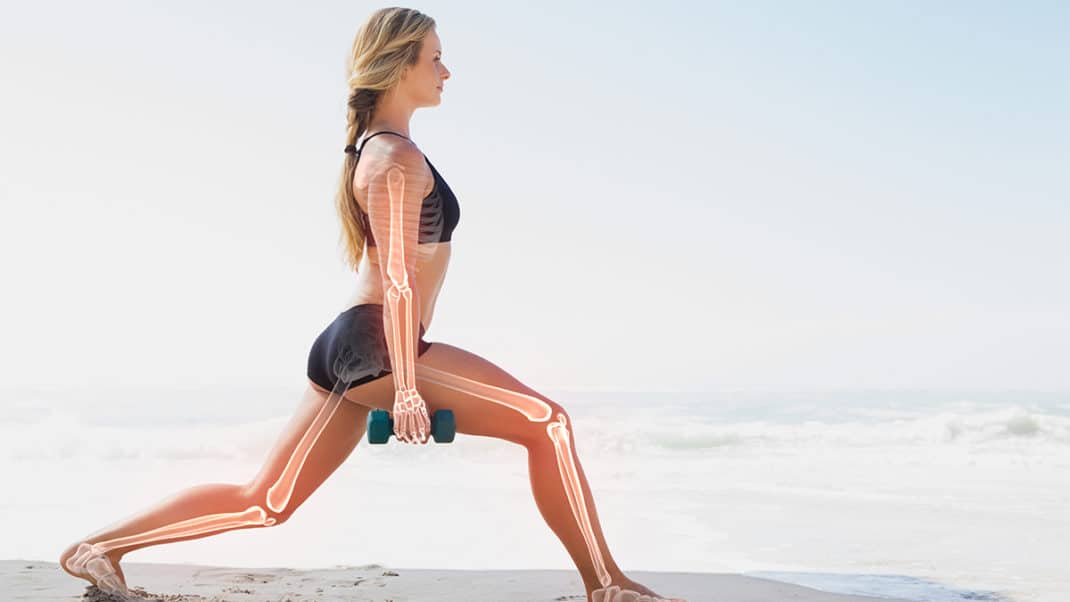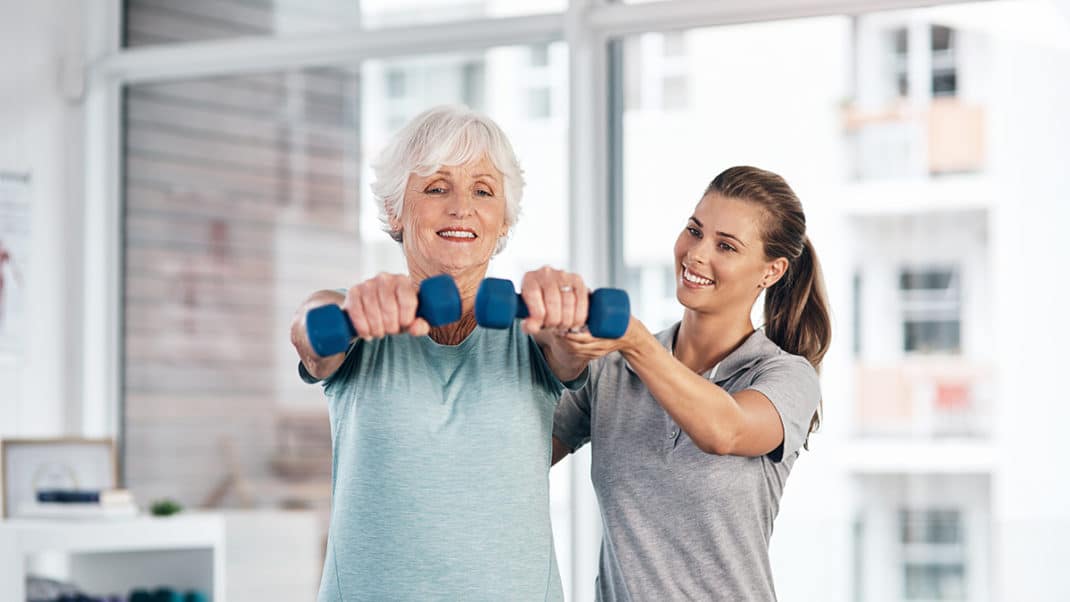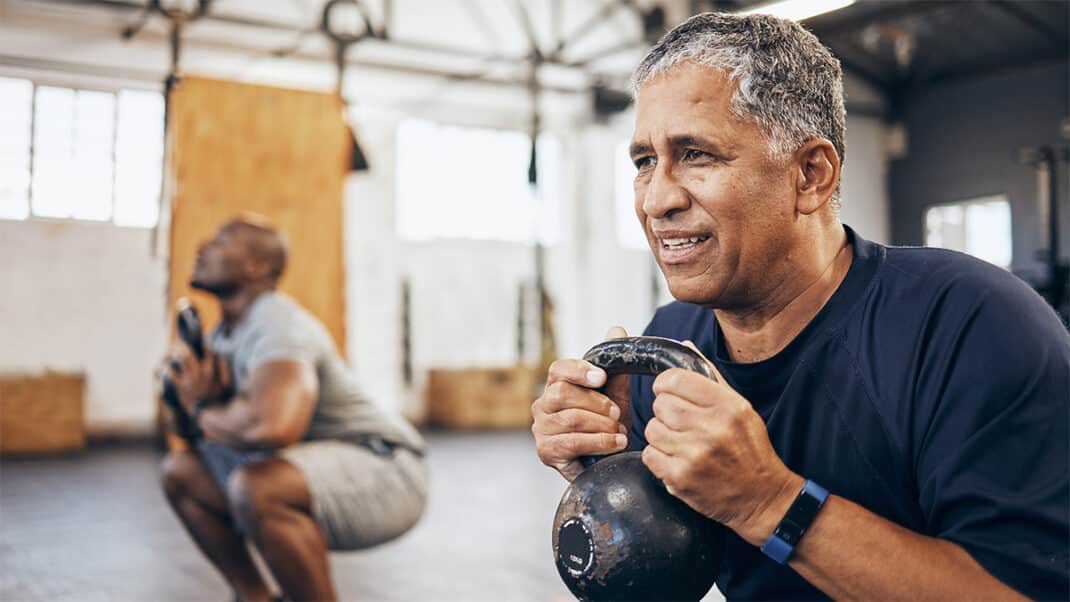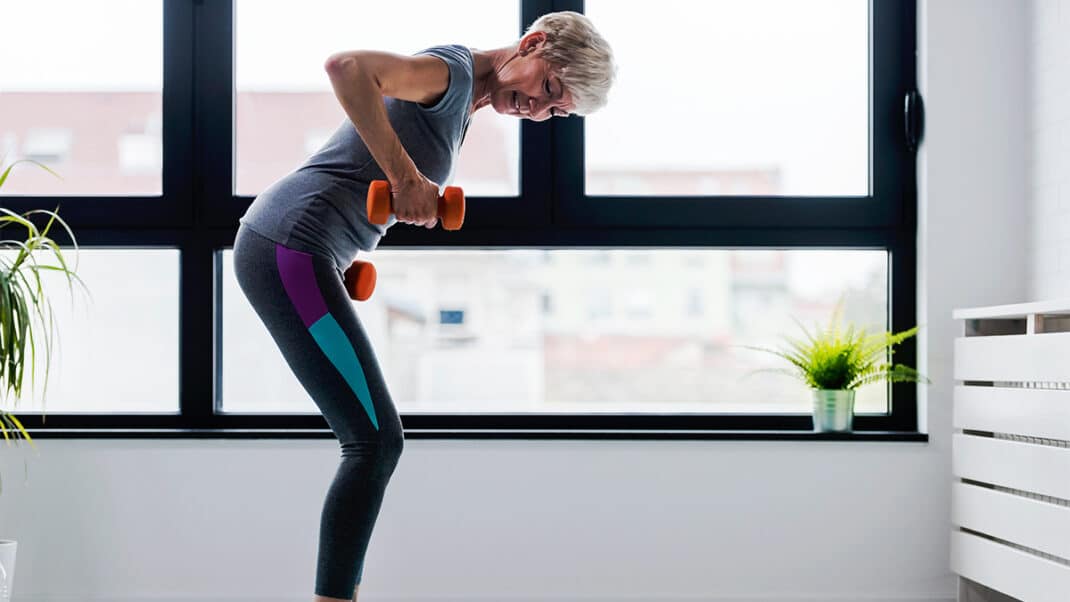Bone Health for Fitness Professionals

Bone health is a critical foundation for human movement, athletic performance, and long-term well-being. The skeletal system provides structure, protects vital organs, stores minerals, and produces blood cells. Without a resilient skeleton, even the most powerful muscles and efficient cardiovascular system cannot function optimally. For fitness professionals, bone health is more than a background concern, it is a central component of safe, effective training. Whether working with athletes, older adults, or recreational clients, knowledge of bone biology, exercise prescription, and nutritional strategies for skeletal health is indispensable.
October offers unique opportunities to spotlight bone health through Bone and Joint Health National Action Week, held annually from October 12 to 20, and World Osteoporosis Day, observed globally on October 20. These events emphasize the importance of awareness, prevention, and management of musculoskeletal conditions such as arthritis, osteoporosis, and back pain. They also serve as reminders of the essential role health and fitness professionals play in prevention and education. By aligning training programs and community outreach with these initiatives, fitness practitioners can amplify their impact and help combat the rising prevalence of bone-related diseases.
Read on for an in-depth exploration of bone health science, the influence of exercise and nutrition on bone metabolism, and practical strategies fitness professionals can use to improve outcomes for their clients. We’ll blend academic evidence with applied practice, offering tools for implementation in training programs, classes, and one-on-one coaching. With the increasing demands of an aging population and the persistent risk of fractures, fitness professionals are uniquely positioned to become advocates for skeletal wellness across the lifespan.
Bone Biology and Remodeling
Bone is often thought of as a rigid, lifeless material, but it is in fact a dynamic and metabolically active tissue. The skeleton is constantly undergoing remodeling, a process by which old or damaged bone is resorbed and replaced with new bone tissue. Osteoclasts, specialized bone cells, break down mineralized bone matrix, while osteoblasts build it back up. This coupled activity ensures skeletal integrity, adaptation to mechanical stress, and regulation of essential minerals such as calcium and phosphate (Clarke, 2008).
Remodeling occurs in response to daily activities, exercise, hormonal influences, and dietary intake. Wolff’s Law suggests that bone adapts to the loads under which it is placed. When bones experience mechanical strain, such as during resistance training or impact exercise, they respond by becoming denser and stronger. Conversely, inactivity or immobilization leads to bone resorption and weakening. This responsiveness highlights why physical activity is one of the most powerful tools available for maintaining skeletal strength.
Peak bone mass is typically achieved in the third decade of life, after which gradual declines begin. Women experience accelerated bone loss during menopause due to reductions in estrogen, a hormone that protects bone by inhibiting excessive resorption. Men also lose bone mass with age, though at a slower rate. Understanding the life course of bone biology helps fitness professionals tailor interventions to each stage of life. For youth, the focus should be maximizing bone mass. For adults, it should be maintaining density, and for older populations, preventing rapid loss and reducing fracture risk.
Bone & Joint Health National Action Week and World Osteoporosis Day
Bone and Joint Health National Action Week, observed each year from October 12 to 20, provides a framework for increasing awareness of musculoskeletal health. The week includes dedicated days for conditions such as arthritis, spine health, and osteoporosis. For fitness professionals, this initiative is an opportunity to educate clients, host community workshops, or incorporate bone health themes into group fitness sessions. By aligning programming with these national campaigns, fitness specialists can contribute to larger public health efforts.
World Osteoporosis Day, held on October 20, further elevates the conversation to a global level. The day emphasizes education on osteoporosis prevention, early detection, and management. Fitness professionals play a vital role in these goals by designing and implementing exercise programs that preserve bone density, improve balance, and reduce fall risk. Participation in these events highlights the professional’s commitment to evidence-based practice and advocacy.

Exercise and Movement for Bone Health
Exercise is one of the most effective interventions for maintaining and improving bone density. Weight-bearing activities such as walking, jogging, stair climbing, and plyometric training stimulate bone formation by applying mechanical loads (Kohrt et al., 2004). For youth, high-impact activities such as jumping and sprinting are particularly beneficial for building peak bone mass.
Resistance training is equally critical. Multi-joint exercises such as squats, deadlifts, lunges, and presses generate compressive and tensile forces that activate osteogenic responses. Fitness professionals should integrate progressive resistance programs with appropriate loading to optimize skeletal adaptation (Liu-Ambrose & Khan, 2003). Training should be tailored to client needs, with younger populations focusing on intensity and variety, while older adults emphasize safety, balance, and progressive loading.
Balance and functional training reduce the risk of falls, a major cause of fractures in older adults. Incorporating single-leg stance drills, agility work, and proprioceptive exercises supports neuromuscular control, which indirectly protects bone health by preventing trauma. Combining strength, impact, and balance work provides a comprehensive approach to skeletal protection.
Nutrition for Bone Health
Nutritional adequacy is essential for bone metabolism. Calcium and vitamin D remain the most critical nutrients, supporting bone mineralization and calcium absorption respectively. The Institute of Medicine recommends 1000–1200 mg of calcium and 600–800 IU of vitamin D daily for most adults (Ross et al., 2011). Adequate sunlight exposure, fortified foods, and supplements may be necessary to meet these requirements.
Protein intake also plays a significant role, providing amino acids required for collagen synthesis and structural integrity. Adequate protein is associated with higher bone mass and reduced fracture risk (Bonjour, 2011). Other nutrients such as magnesium, vitamin K, and omega-3 fatty acids contribute to skeletal health by influencing bone turnover, inflammation, and mineralization. A diet emphasizing whole foods, fruits, vegetables, and lean proteins provides comprehensive support for the skeletal system.

Programming Considerations for Fitness Professionals
When designing programs for bone health, fitness professionals should assess the client’s age, health status, and risk factors. For youth and young adults, maximizing peak bone mass through high-impact and resistance training is a primary goal. In middle-aged clients, the focus shifts toward maintaining density and preventing declines. For older adults or those with osteoporosis, programming should emphasize safety, balance, and fall prevention (Howe et al., 2011).
Implementation strategies include periodization of resistance training, incorporation of impact activities tailored to individual tolerance, and the inclusion of recovery protocols that account for bone and joint stress. Educating clients about posture, alignment, and safe lifting mechanics further reduces injury risk while reinforcing skeletal resilience.
Implementation in Client Settings
Fitness professionals can integrate bone health promotion into group classes, one-on-one sessions, and community programs. Examples include adding weight-bearing intervals into aerobic classes, offering balance circuits for older clients, or educating athletes about nutritional strategies to support bone recovery after intense training. Collaboration with healthcare providers ensures alignment with medical guidelines and offers clients a holistic approach to musculoskeletal care.
Future Directions
Bone health will remain a public health priority as populations age and osteoporosis prevalence increases. Fitness professionals are uniquely positioned to translate research into practice by offering safe, effective interventions that enhance skeletal strength. By aligning programming with initiatives such as Bone and Joint Health National Action Week and World Osteoporosis Day, professionals can amplify impact and foster greater awareness in their communities.
Through consistent application of evidence-based exercise, nutrition, and lifestyle strategies, fitness professionals can play a central role in preventing fractures, promoting mobility, and improving quality of life for individuals across the lifespan.
References
- Bonjour, J. P. (2011). Protein intake and bone health. International Journal for Vitamin and Nutrition Research, 81(2–3), 134–142. https://doi.org/10.1024/0300-9831/a000063
- Clarke, B. (2008). Normal bone anatomy and physiology. Clinical Journal of the American Society of Nephrology, 3(Suppl 3), S131–S139. https://doi.org/10.2215/CJN.04151206
- Howe, T. E., Shea, B., Dawson, L. J., Downie, F., Murray, A., Ross, C., … & Creed, G. (2011). Exercise for preventing and treating osteoporosis in postmenopausal women. Cochrane Database of Systematic Reviews, 7, CD000333. https://doi.org/10.1002/14651858.CD000333.pub2
- Kohrt, W. M., Bloomfield, S. A., Little, K. D., Nelson, M. E., & Yingling, V. R. (2004). Physical activity and bone health. Medicine & Science in Sports & Exercise, 36(11), 1985–1996. https://doi.org/10.1249/01.MSS.0000142662.21767.58
- Liu-Ambrose, T., & Khan, K. M. (2003). Exercise, physical activity, and osteoporosis: The role of the exercise professional in optimizing bone health. British Journal of Sports Medicine, 37(1), 6–12. https://doi.org/10.1136/bjsm.37.1.6
- Reginster, J. Y., & Burlet, N. (2006). Osteoporosis: A still increasing prevalence. Bone, 38(2 Suppl 1), S4–S9. https://doi.org/10.1016/j.bone.2005.11.024
- Ross, A. C., Taylor, C. L., Yaktine, A. L., & Del Valle, H. B. (Eds.). (2011). Dietary reference intakes for calcium and vitamin D. National Academies Press.





